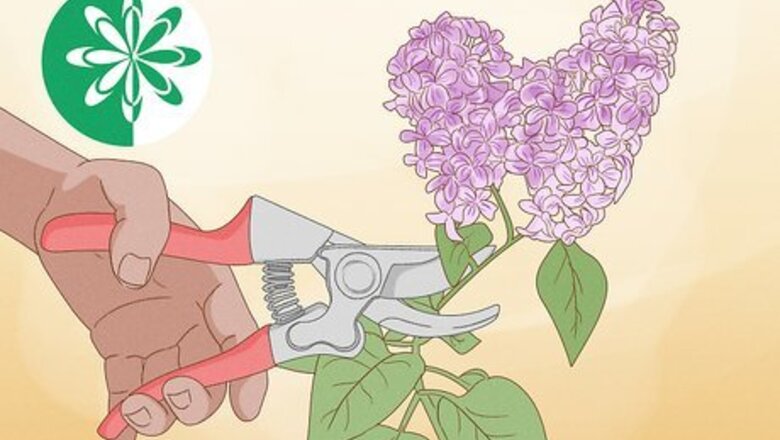
views
Doing an Annual Pruning
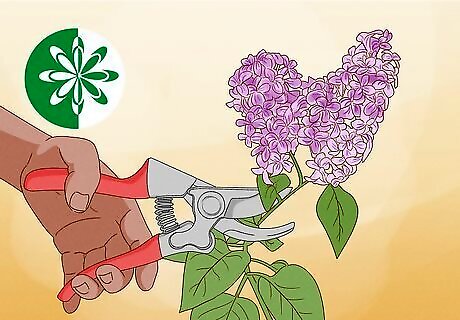
Cut fresh flowers in the spring. When lilac flowers reach their peak and are just this side of fading out, cutting them to create indoor bouquets actually helps the plant. Left on their stems, the flowers will die but continue sapping energy that could be spent on new growth. So don't feel guilty or wasteful when you go outside with your hand trimmers to take off the prettiest flowers - you're doing just the right thing for your lilac bush or tree. Another term for this type of pruning is deadheading. In addition to pruning flowers just past their peak, prune those that are already dying. Make the cut just at the base of the flowers. You can disinfect your tools before you prune to avoid spreading disease to your lilac bush. Simply wipe it down with a disinfectant spray or rubbing alcohol.
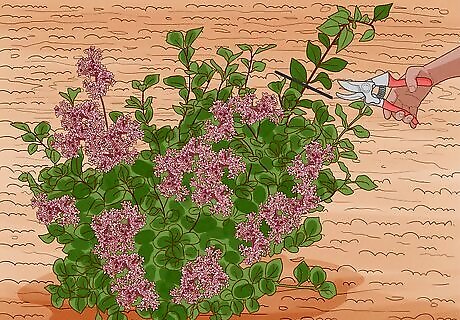
Nip off the long stems. Take a look at your lilac bush or tree and assess whether there are any extra-long but healthy-looking stems that need to be cut back. Doing so will help the lilac keep its pretty shape. The process of cutting back the stems a bit is called tipping off. Use a hand clipper to cut longer stems back to the next closest pair of side shoots. This means you'll be trimming the stem back beyond the flowered part, and all the way down to where side shoots are growing off. If A long stem doesn't have side shoots closer to the base, trim it back to the closest node or bud, where new shoots will sprout. Tipping encourages lilacs to sprout new healthy, bushy growth near the cut.
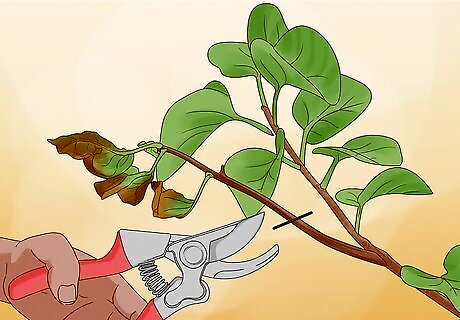
Thin the lilac. Search for dead or diseased stems. If you see any limp, brown or diseased stems in your lilac bush or tree, cut them out close to the base. This process is called thinning, and it helps the plant by allowing fresh air to circulate through the plant and removing dying foliage that sap its energy.
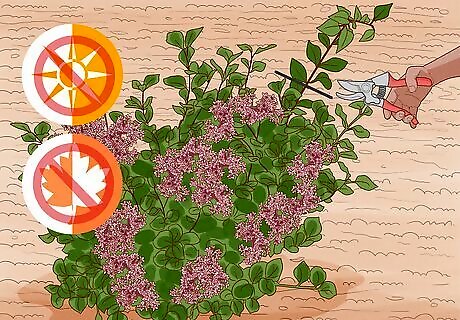
Don't prune later in the summer or fall. This annual pruning should take place during spring (May or June in the northern hemisphere, around September to November in the southern hemisphere). Such pruning will encourage the development of new buds, which will continue maturing over the year before they bloom the following spring. However, if you prune too late in the summer, you risk cutting away some of this new growth - hence causing next spring's bloom to fall short. If you prune in the fall or winter, your lilac may not produce flowers at all.
Rejuvenating an Overgrown Lilac
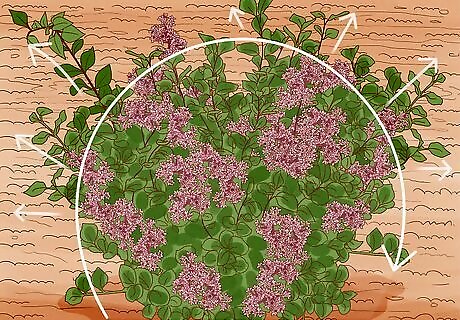
Take an assessment of your lilac. If it's old, overgrown, or unshapely, giving it a rejuvenating pruning will help restore it to a healthier and more attractive state. This type of pruning goes beyond a lighter annual pruning to severely cut the bush or tree back, allowing for new growth to occur. Do your assessment in early spring, before the lilac has come back to life. This is the best time of year for a deeper pruning. Keep in mind that doing a rejuvenating pruning will mean losing the maturing buds that would otherwise turn into this spring's flowers. Though you might sacrifice this year's blossoms, you'll be rewarded in the following seasons with better growth and flowers.

Determine if your lilac was grafted. Some lilacs are grafted with other varieties in order to produce a particular flower shape or color. Grafted plants need to be pruned with a bit more care, since cutting below the grafted area will disturb the graft and change the way your plant grows. Look for an area on one of the lilac's main trunks where there's a noticeable difference in bark near a lump. This is probably the graft. If you see no such thing, the plant likely hasn't been grafted, so there's no need to look out when you make cuts.
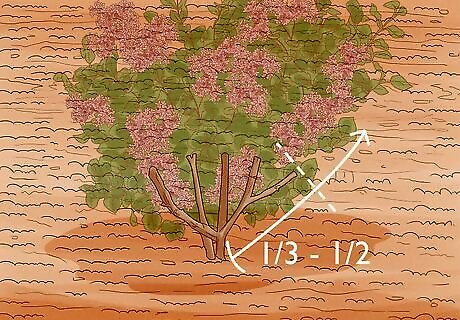
Use clippers to trim the plant close to the ground. If the trunks are very thick, you may need a saw. Cut each branch back by 1/3 to 1/2. The lilac will grow back, but it'll take a season or two. If you discovered that your plant was grafted, be sure not to cut below the graft.
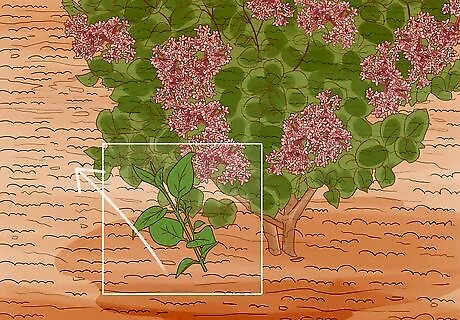
Cut back the suckers. Suckers are baby trunks growing out from the original plant, or sprouting from the ground close by. Cut these back all the way to the base of the trunk or the ground to prevent them from getting any bigger. Suckers take away energy from the rest of the plant. A healthy lilac bush or tree should have no more than 2 or 3 large trunks.

Fertilize the plant afterwards. If you have heavily pruned your lilacs, you should fertilize the plant afterwards to restore the pH balance in the soil. You can use compost, manure, or a prepackaged blend around the plant to help it recover.



















Comments
0 comment